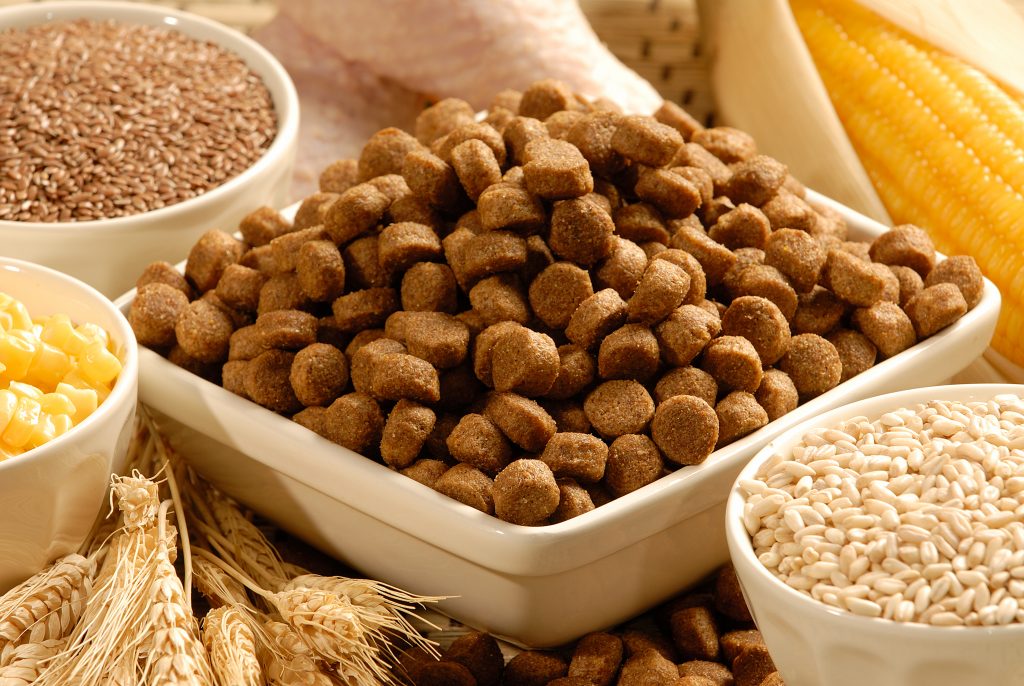How To Select the Best Cheap Dog Food

Not all of us have the ability to spend hundreds of dollars a month on dog food. Luckily, we can still pick a quality dog food while remaining budget-friendly.
In fact, nutrition is not directly related to cost in most cases. Just because a dog food is more expensive doesn’t mean it is better. Sometimes, these “premium” brands can even include harmful ingredients.
Of course, when trying to stick to a budget and choose the best food for your pooch, there are a few key things you should look out for. Here are the most important factors to consider when selecting a dog food:
Look at the Ingredient List
The ingredient list is going to be the most telling part of any dog food bag. Preferably, you want meat of some sort to be the first ingredient and appear as often as possible in the first five ingredients.
The type of meat doesn’t really matter unless your dog has allergies, in which case you’re going to need food that is free of the protein they’re allergic to.
By-products are not necessarily bad for your canine by any means. “By-products” are just the leftover part of the animal that humans don’t typically eat, like the nose and ears. Of course, in the wild, our canines would obviously eat this naturally. Plus, many by-products are quite nutritious and are packed full of necessary vitamins and minerals, like collagen. Studies have found no difference between whole meats and by-products in terms of our pet’s digestion.

Generally speaking, as long as the source of the by-product is named, it is a good option for your dog. You want to avoid vague ingredients, like “meat by-product”, simply because you really don’t know what it is. Avoiding vague ingredients is even more important if your dog is allergic to certain proteins.
Pick Up a Grain-Inclusive Food
While many companies proclaim that their “grain-free” food is better for your canine, this is not often the case. Dogs have evolved to eat grains and digest it perfectly fine. In fact, whole grains are a great option for many canines, as they provide key nutrients.

Many grain-free dog foods don’t actually have much more meat in them than your average grain-inclusive dog food. In most cases, the company just takes their normal formula and switches out the grain for an inexpensive veggie, like peas or potatoes. While these vegetables are good for us, not all of them are good for our canines.
In fact, the FDA has released a warning related to peas, potatoes, and lentils. It seems that some of these vegetables might be related to certain diet-related heart conditions in dogs. Sadly, many companies continue to use these less-than-stellar fillers in an attempt to keep costs down while still remaining grain-free.
Because of these factors, it is almost always better to choose a grain-inclusive food unless your dog has an allergy to gluten, which is actually quite rare. This is particularly important if you’re looking to purchase cheaper dog food, as selecting a grain-inclusive one will help keep costs down.
Check Out the Macronutrients
Another key aspect to look at is the food’s macronutrient content. Macronutrients are simply carbs, fats, and proteins, which are the major building blocks our bodies need to survive. Each species needs a particular mixture of these nutrients. When choosing the best high quality dog food to purchase, the right macronutrients will be important.
Studies have shown that dogs need a diet high in fats and proteins but low in carbohydrates. This was discovered by allowing a group of dogs to choose their own diet for an extended period. Because animals will typically choose the best macronutrient formulation for their health, this is a great way to figure out what exactly our furry friends were made to eat.
There have been a number of studies into this question, but they have all come to generally the same conclusion. The exact macronutrient percentages have changed slightly depending on how long the study was performed. However, the basic premise remains true: dogs need lots of protein and fat.
Sadly, it can be difficult to tell exactly how much protein, fat, and carbs a particular dog food has in it. This is because dog foods are only required to list the “guaranteed analysis” of their dog food. This is what’s in their dog food when you include the water, but leave out the carbohydrates.

Obviously, this isn’t very helpful for our needs. Luckily, you can figure out the macronutrients of any dog food using the guaranteed analysis. To do this, you have to convert the information they provide on the bag into the “Dry-Matter Basis”. This is the contents of the dog food when you take out the water. In other words, it’s what your dog will actually be digesting the food as.
This is done most easily through an online calculator. These calculators are quite easy to find and can make looking for the correct dog food much easier.
The Brand Matters
When choosing a dog food, you might be tempted to just focus on the ingredient list and ignore the brand itself. However, the company that made the food is equally as important as what’s actually in the food.
Some companies have high rates of recalls and contamination. You may wish to avoid these dog foods, just because the odds of them slipping up again are quite high. A quick Google search can let you know how often a particular brand is recalled.
There may also be other problems with a brand that isn’t necessarily worth a recall. For example, the FDA released a warning that certain dog foods were causing heart problems in some canines, namely Acana, Zignature, Taste of the Wild, 4Health, Earthborn Holistic, and Blue Buffalo.
In situations where the FDA has only released a warning, you may want to go ahead and switch to a different dog food while the link is being investigated thoroughly. It is always better to be safe rather than sorry when it comes to your pet’s health.

